Since 2017, the full-size Can-Am Maverick X3 has dominated headlines because of its big performance, sit-in-it cabin, and fun-to-drive chassis. Can-Am saw the success and wanted to bring this level of comfort and performance to the trail market. Not that the original Maverick trail machines were bad, but they didn’t give you the same feeling as flying an X3 through the woods, mainly because of their higher seating position and more antiquated suspension design.
Last year, we previewed an all-new Can-Am 50” machine developed specifically for the trail crowd – the Maverick Trail. This year, Can-Am used that dynamic, compact, and engaging chassis but expanded its width from 50” to 60” and named it the Maverick Sport. We recently had the opportunity to drive this all-new Sport and came away impressed.
ALSO SEE: The 2019 Can-Am Model Lineup Has Arrived With Fresh Style and New Equipment
Harkening back to the Maverick Trail for a minute, we found that vehicle to be very capable with its dynamic chassis that allows you to flick it around without feeling overly tippy even at 50” wide. The power options also performed to our liking with either 75 or 100 horsepower options. Last but not least, the “Ergo-Lok” interior shined with plentiful storage options, well-bolstered seats mounted very low in the chassis, and easy ways to integrate accessories. So, being that the Maverick Sport is essentially this Trail-model except widened 10” overall, we had a feeling that the Sport would be everything the Trail was, and obviously more…
Back to basics here for a couple of the important specs and changes to the Sport model… A total of 2 Maverick Sport models are offered – either the base or DPS (Dynamic Power Steering) model. The standard engine in the base model (does not have power steering) is the 1000, which puts out 75 horsepower. The DPS model comes with 2 engine options – you can get the aforementioned 1000 engine with 75 horses, or you can option it out to get a 100 horsepower, 1000R powerplant. Either way, Can-Am’s QRS CVT transmission is utilized and, from our experience, it is clutched pretty much spot on for either of these Rotax V-twin engine options.
Take off is smooth in either Low or High gear, and power comes on very smooth when the throttle is punched. Power is then routed to either 2 or 4 wheels via the push-button activated 4WD system. The rear differential is always locked, giving you all-out traction and predictable driving behaviors, all the time. The front differential comes in the form of the Visco-Lok, which is Can-Am’s speak for an automatically locking front differential. This front diff has traditionally received flack in the industry because it doesn’t fully lock, but after driving it on this Sport model, it really wasn’t an issue. Traction was never waining, whether we were riding through mud pits, splashing through water crossings, or climbing up vertical rock-strewn hill climbs. Needless to say, it didn’t hold us back! Yes, those of you looking to use this as a boulder climber are going to want a locking front diff. As a note, the DPS model gets the QE edition, which just makes it engage quicker, of this front diff, too.
A big reason why this machine is able to conquer all of these terrains is because of its standard 27” Maxxis Bighorn tires and 12” of ground clearance. The Bighorns are the do-it-all tire choice because of their deep lugs that give you predictable traction and driving dynamics with ample forward traction and sidewall bite.
At 1392 pounds dry, the Maverick Sport is right in line with the competition as far as power to weight ratios. We drove both the 1000 and the 1000R editions, both of which put you back in the seat under throttle. After driving the 1000 up in elevation for hours the first day, we didn’t feel like we needed any more power for trail riding to make the experience spirited and fun. It wasn’t until the second day of riding that we cinched the seatbelt tight in the 1000R and found that the extra 25 horsepower is right at home for those of us who want to step up the adrenaline-filled riding a bit. The extra power was particularly useful on tight and technical terrain that egged us on to go fast. Throttle response is crisper on the 1000R, and the power jump is very noticeable.
No matter which engine you choose, though, there is still that electronic throttle that lags when you pick back up the throttle after sending it into a corner. Good news though – this helps save the belt, which was never an issue for us or any of our cohorts on this ride. It doesn’t, however, help you save seconds off of a lap time. All joking aside, we really appreciate how the DPS model has the Intelligent Throttle Control (iTC) on both engine options, giving the driver the ability to switch from ECO to SPORT mode with the flick of a switch. ECO mode is great for saving fuel and rock climbing with delayed throttle response (makes it smoother over the bumps). SPORT is great for everywhere, if you choose.
ALSO SEE: New Can-Am Maverick Sport Continues Brand’s Push into Side-by-Sides
At the end of the day, we’d pick the DPS model just for the power steering, every time. It is weighted beautifully, performing better than the Tri-Mode system found on the X3 models in our humble opinions with a more linear feel. If you are an aggressive driver who likes to push your vehicles into corners, you’ll appreciate the consistency of this DPS system and how it doesn’t jerk the wheel in your hands if you hit a rock mid-corner with the suspension compressed, but you’ll find that it needs to have about a 1/4 turn taken out of the steering system to quicken it up for tight, fast trails.
FOX shocks are found on all 4 corners in the Sport and offer 11.5” front and 12” rear travel. With its light weight and excellent chassis dynamics, the Sport is easily jumped over waterbars in the trail, and we found that cornering is also a strong suit with the sway bars located on the front and rear of this UTV. Low-speed compliance is improved over the Trail model (FOX shocks are only found on the Sport model), and this Sport cruises over the rough stuff and doesn’t beat up the occupants. For the most part, the high-speed compression compliance was great, a feeling we usually come away from with FOX shock setups as their spring and valving rates are tested and tuned with Can-Am engineers. We were able to find the limits of this suspension system on the big bumps as they would tend to “blow through” the travel when hitting hard on square edge ruts and bumps. We believe that a set of upgraded FOX QS3’s with compression adjustment would alleviate this feeling. Note that this symptom is only noticed when pushed hard through 12” or greater bumps in the trail.
ALSO SEE: 2019 Yamaha Wolverine X2 First Drive – Review
With all of this being said, the handling is overall very good on the Maverick Sport, especially with a weight bias of 42/58, front/rear. The 90.6” extended wheelbase on this machine compared to the competition makes it handle better and feel more confident when you push it, a trait we really enjoy from behind the wheel! You’ll notice the longer wheelbase in tight trails with the occasional 3-point turn, but the stability is well worth the tradeoff. The cabin is very comfortable with an adjustable driver’s seat and plenty of storage options, plus a great drivers position for short and tall drivers alike (my 6’3” frame fits in here no problem). Those who thought the Maverick Trail felt compact inside with the straight doors will be happy to know that the Sport has wider doors that increase shoulder room on each side by 2.5”, for a total of 5” wider on the inside.
With this new chassis, Can-Am went through extensive engineering lengths to ensure that maintenance was easy. There are simple access points to check fluid levels, get to the brake and radiator reservoirs, and check the electrical system. Plus, Can-Am offers a 1-year maintenance free, no break-in guarantee with the Maverick Sport.
The Verdict: 2019 Can-Am Maverick Sport Review
Overall, the Maverick Sport proved to be another stellar vehicle in the Can-Am off-road lineup. It has the driving dynamics, power, and interior comfort that we expect in a 60” trail vehicle, especially if you like to sit low in the chassis and fly through the trees. Look for the Maverick Sport in your local Can-Am dealer now with prices ranging from $14,699 for the base model to $16,499 for the DPS with 1000 engine and $17,999
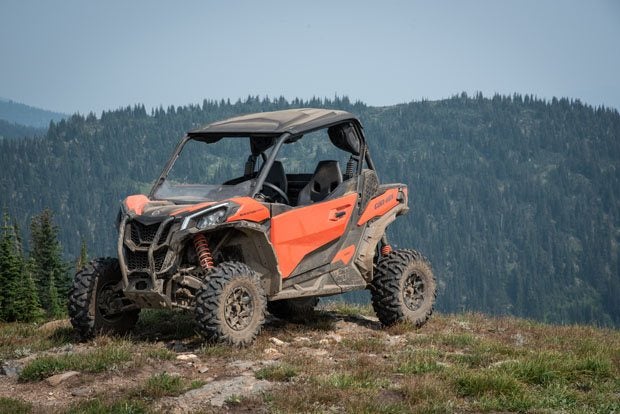
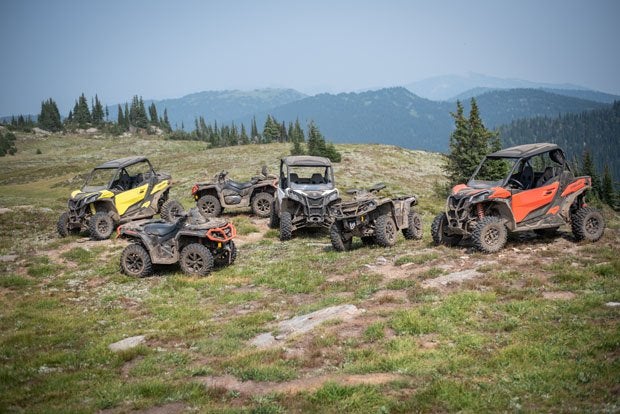
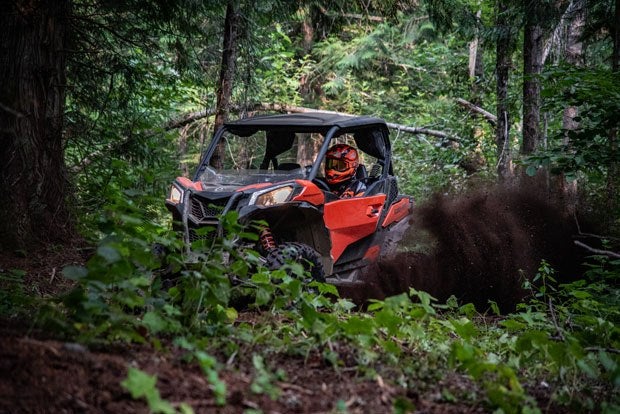
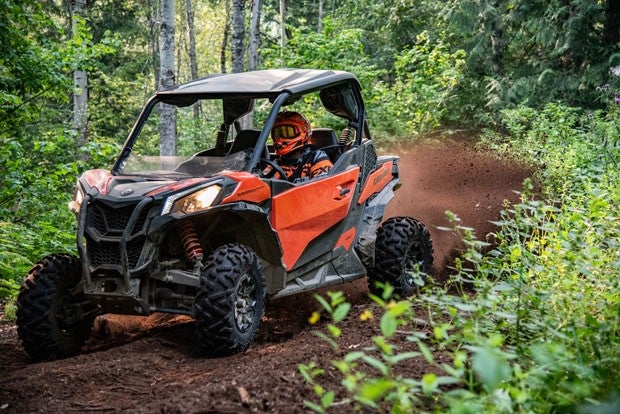
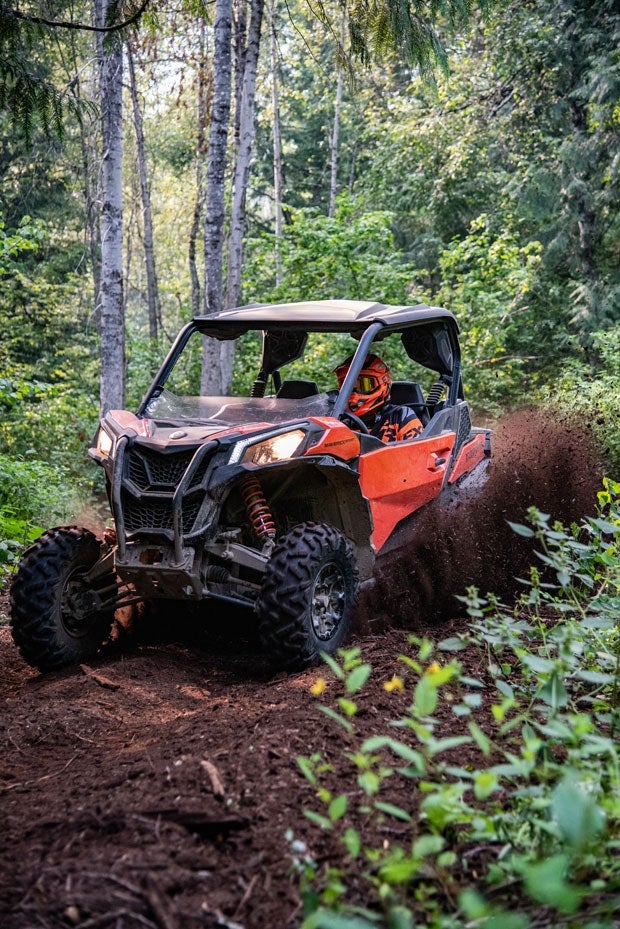
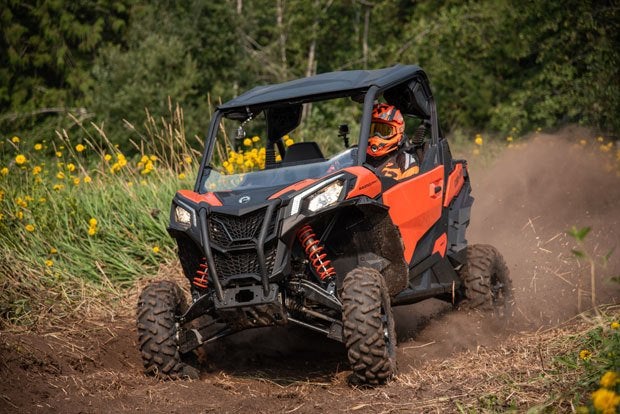
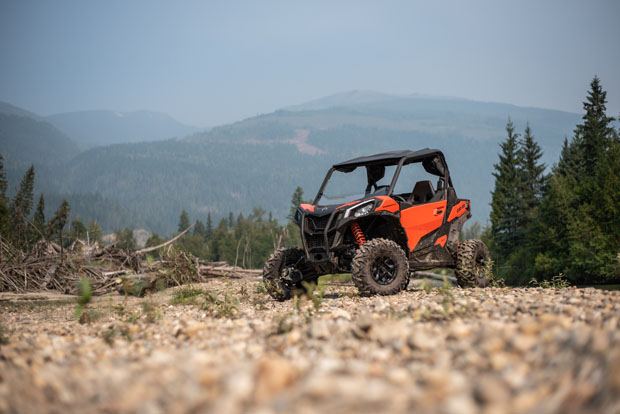
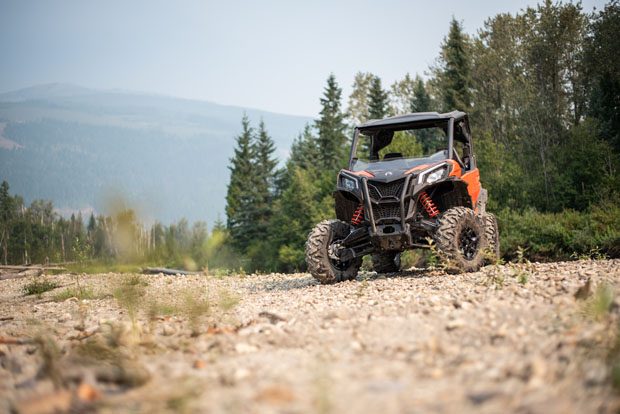
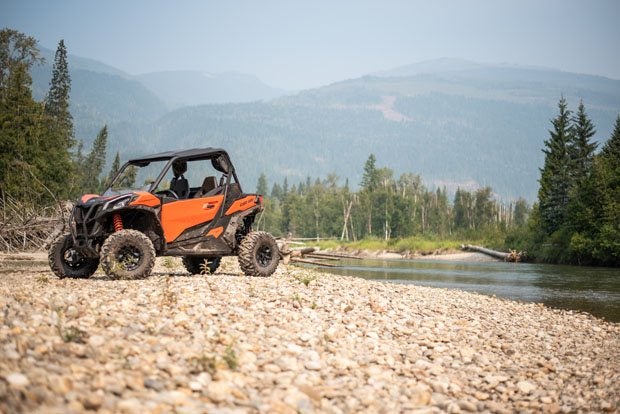
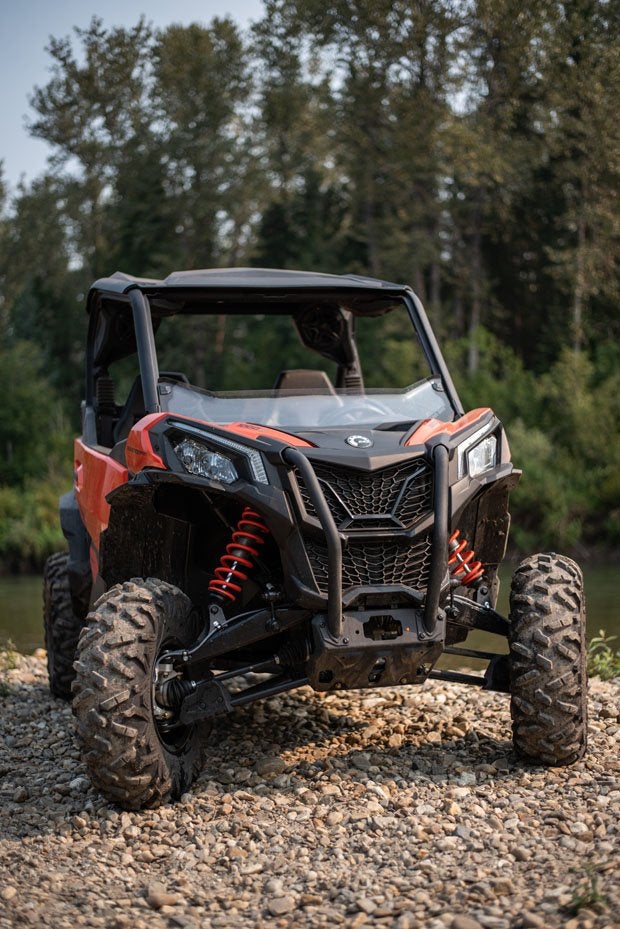
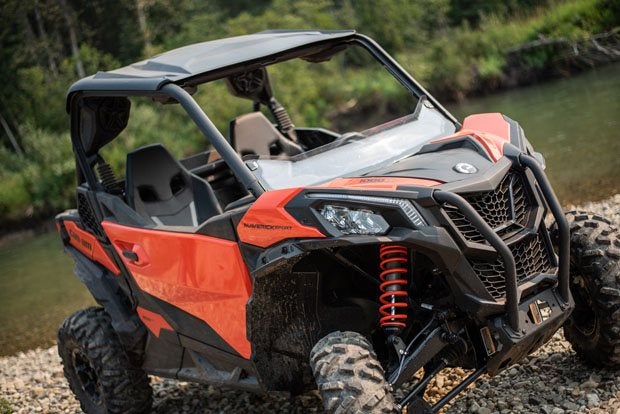
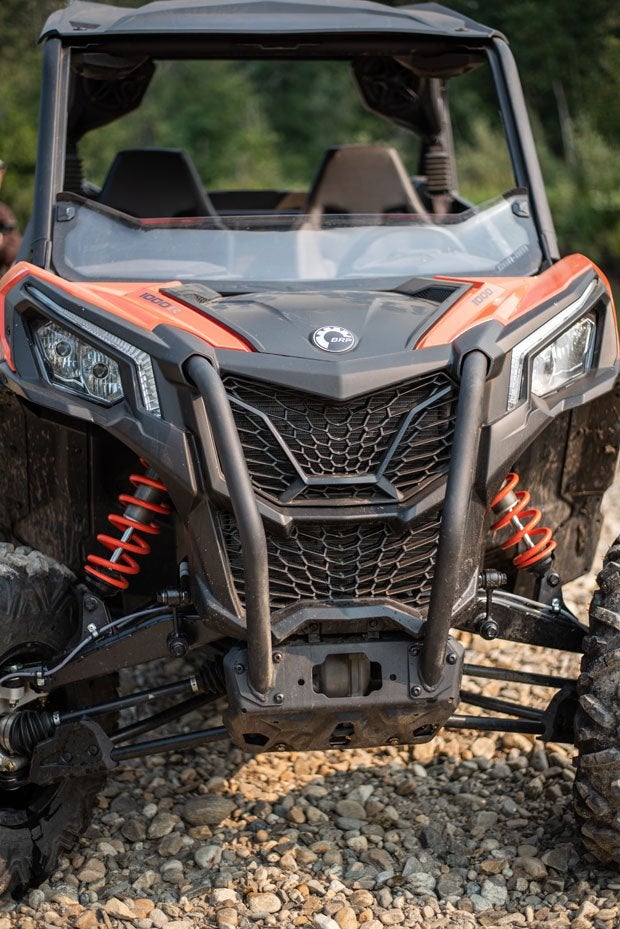
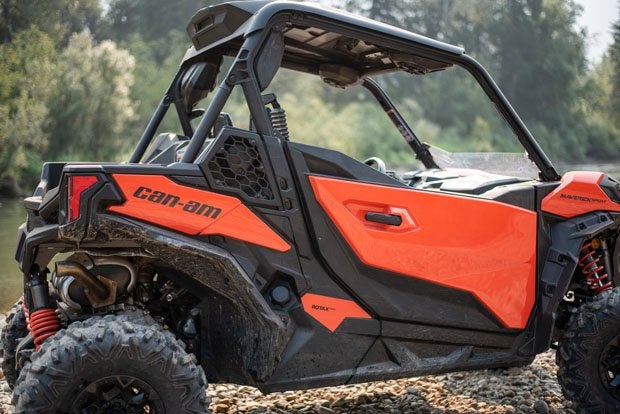
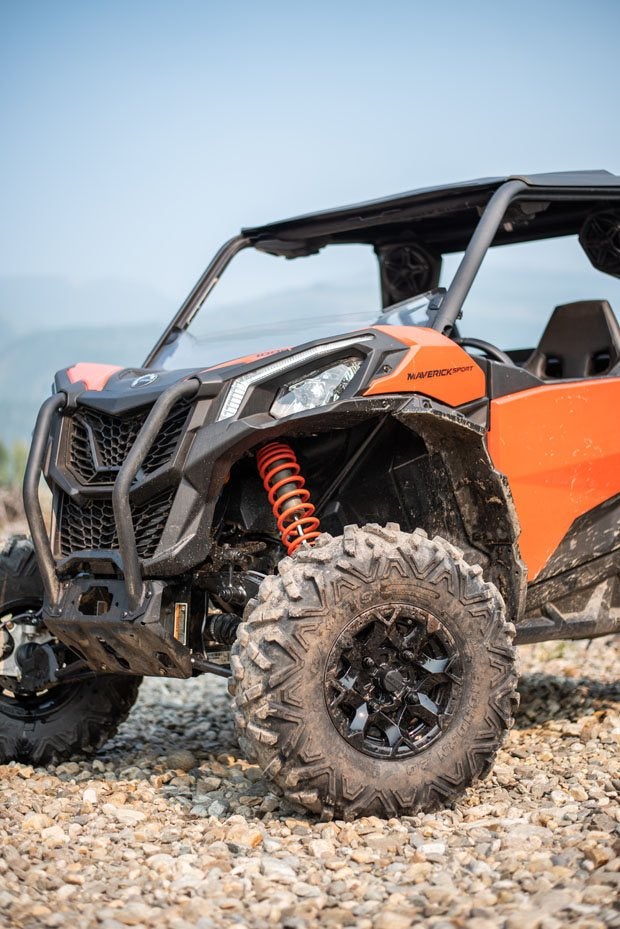
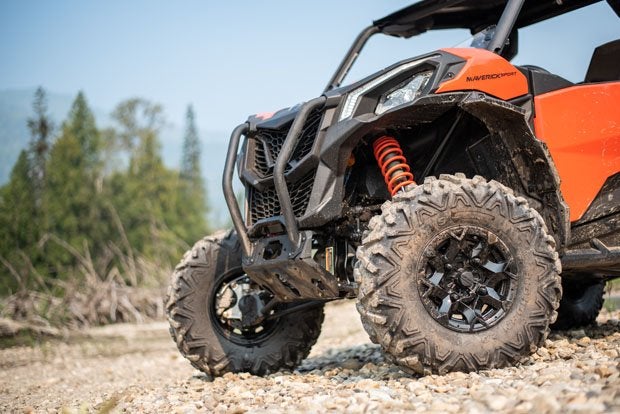
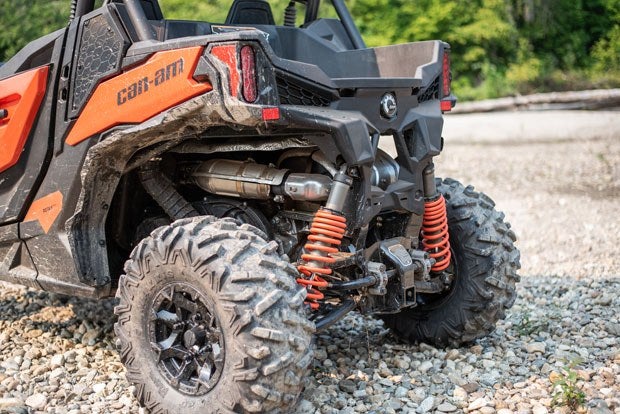
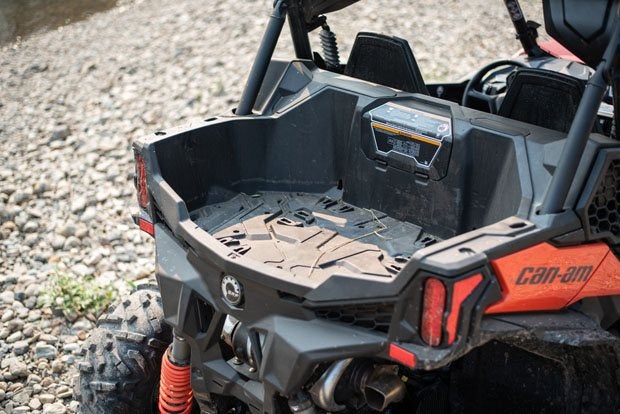
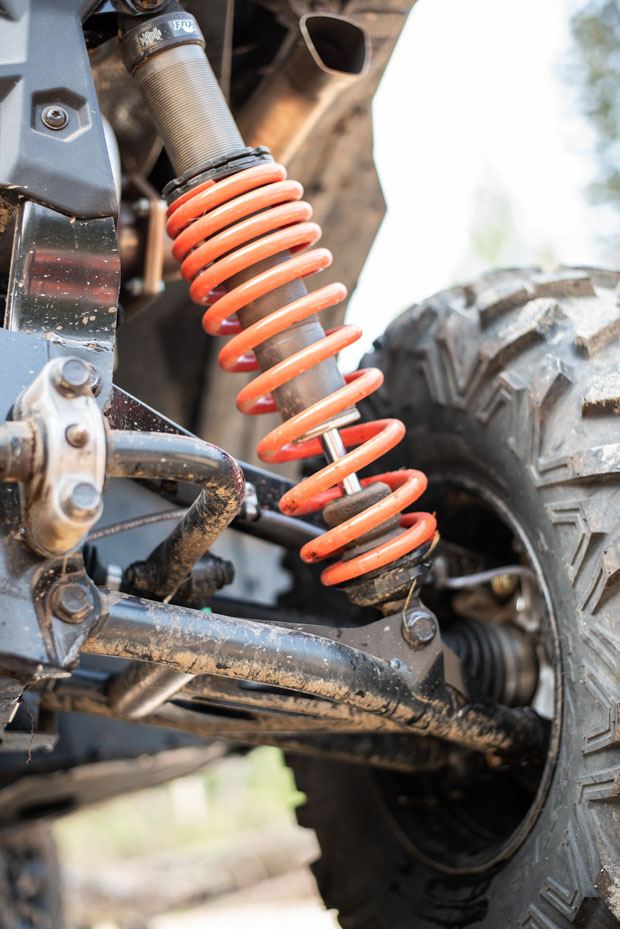
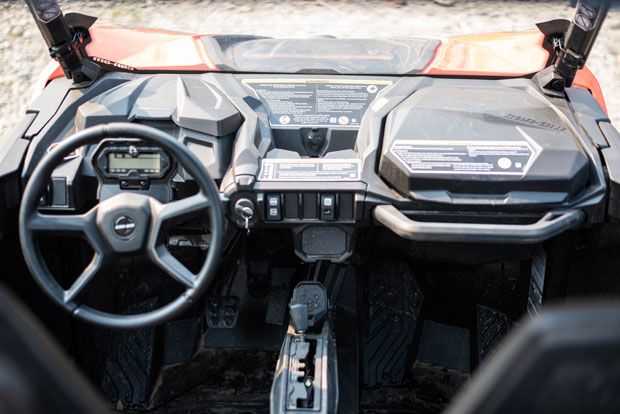
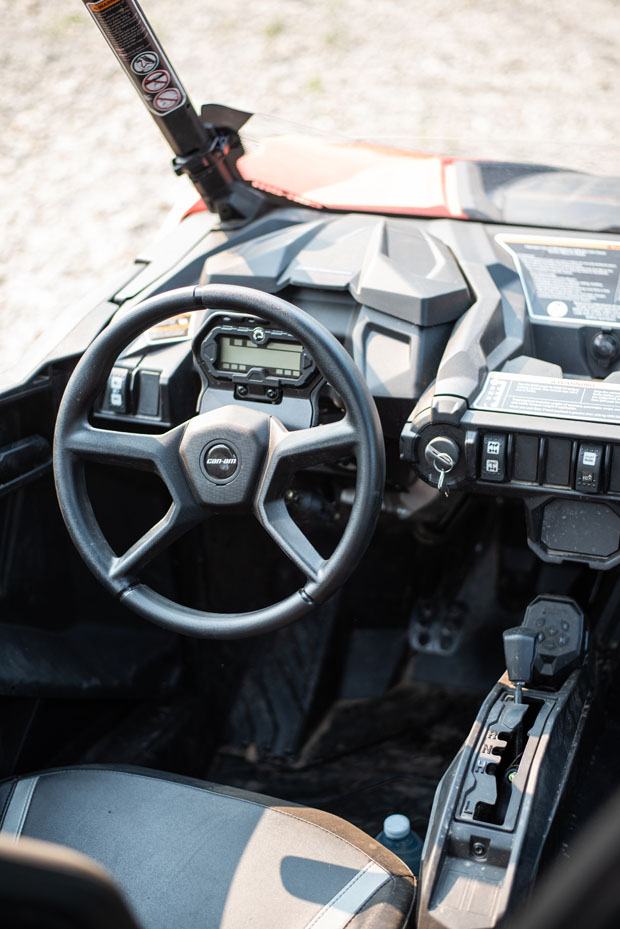
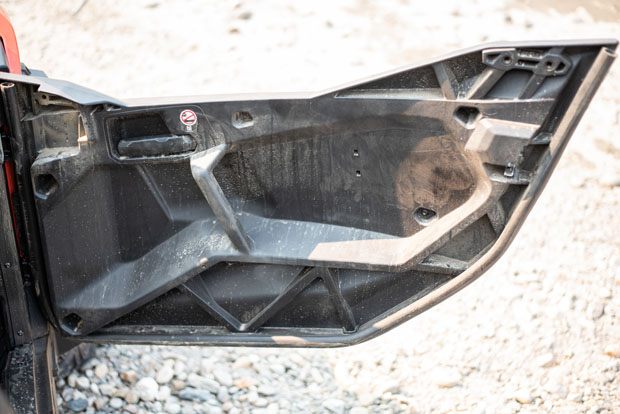
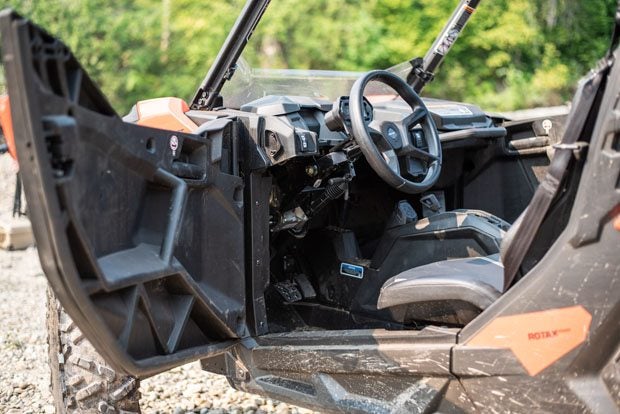
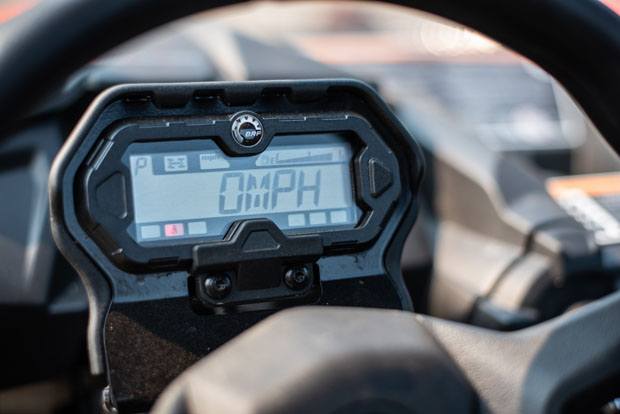
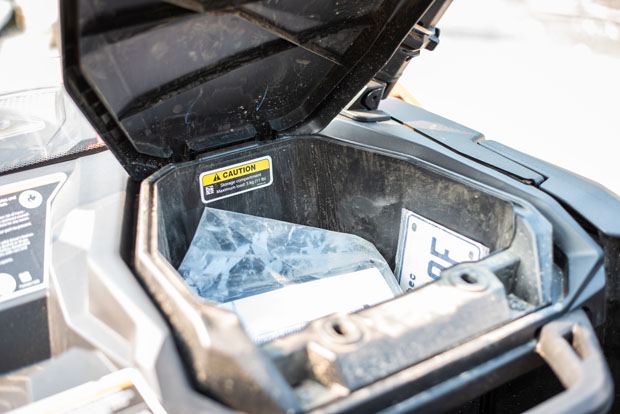
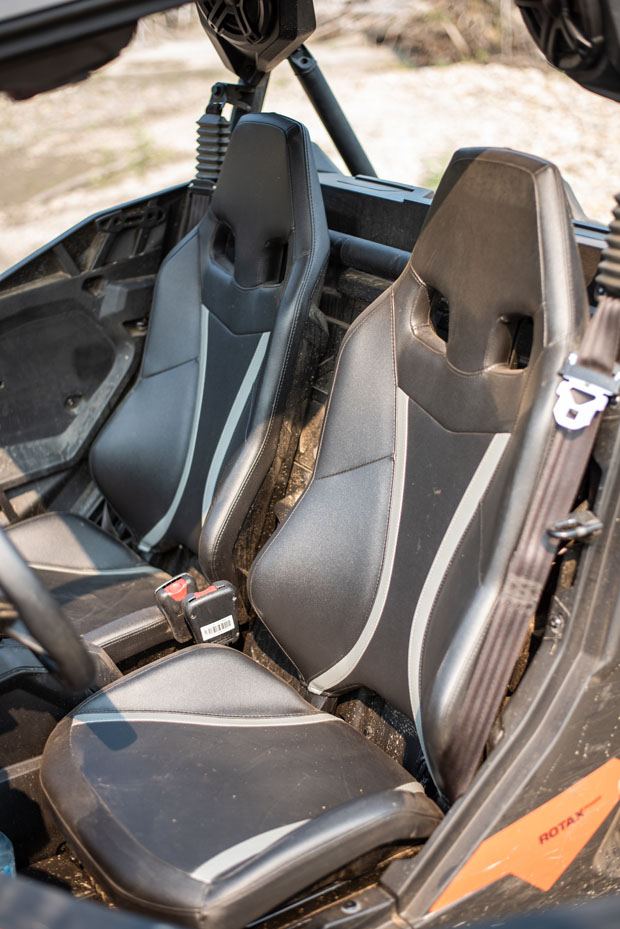
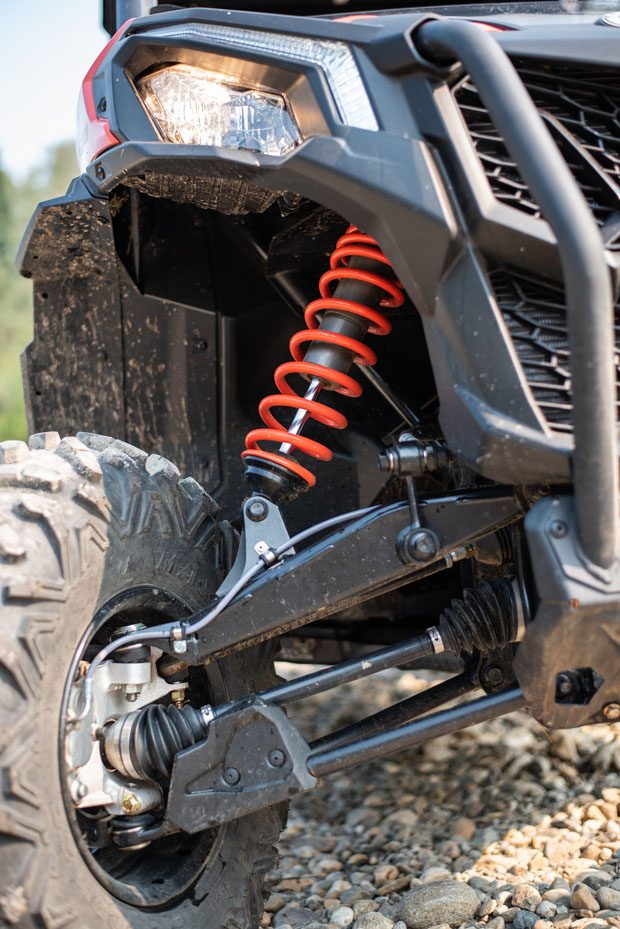
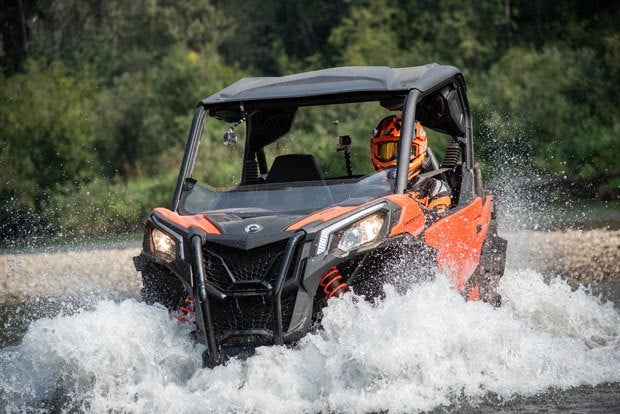
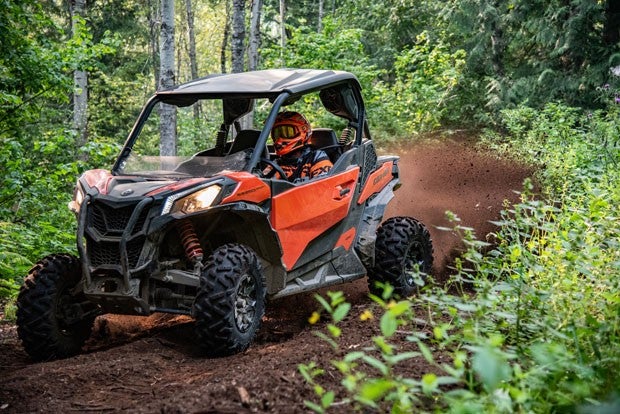
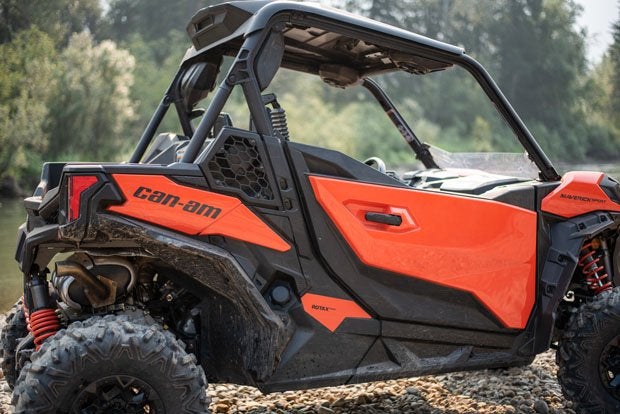

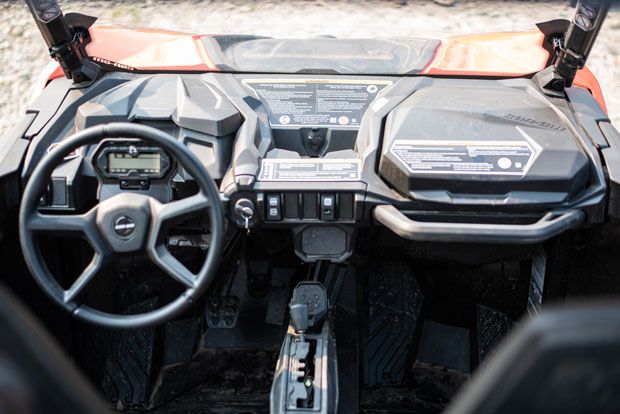
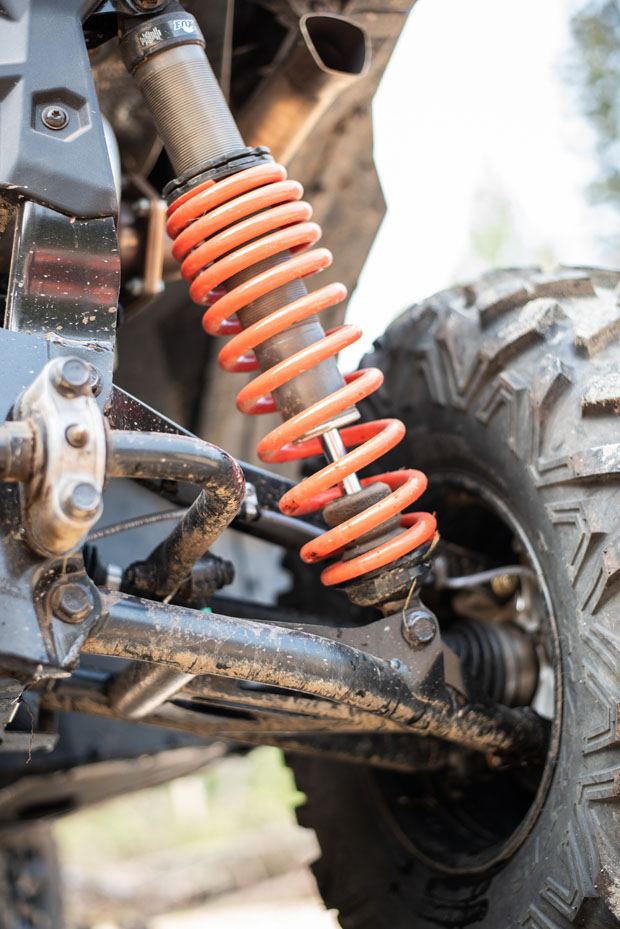
 Your Privacy Choices
Your Privacy Choices